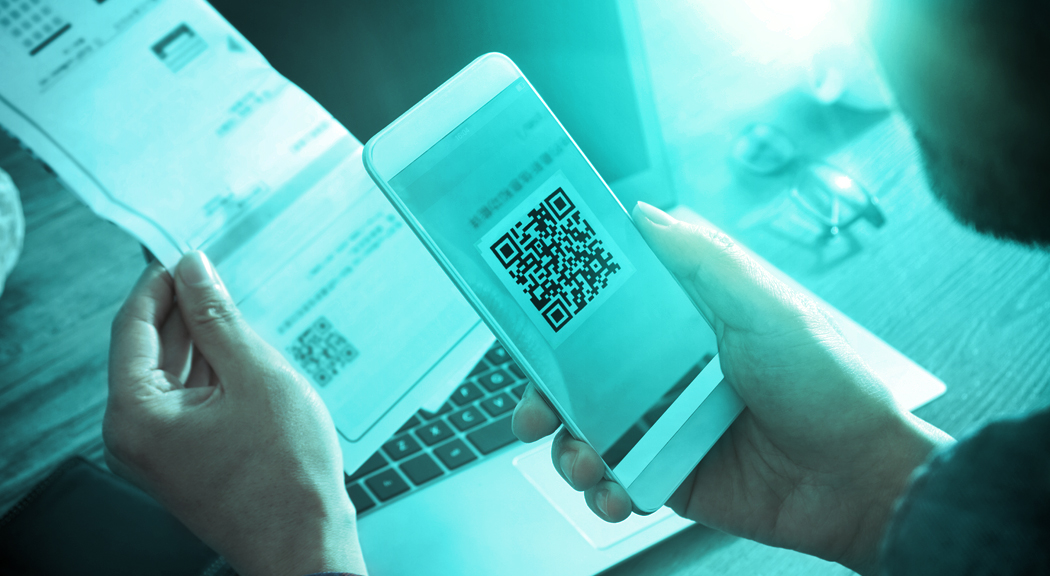I am aware of what I need to do if my phone gets hacked.
Quick Response Code (QR code)

When you buy an item from a clothing store or a grocery, you will notice that it has a label attached on its back, featuring vertical lines with digits at the bottom. When scanning the item with a reader, the cashier can know its price and specifications without referring to the price list. These lines are called barcodes, the first generation of codes or encrypted data, that can store digits that are readable using specific devices. Now, the second generation of these codes, known as the QR codes, exists in square formations, unlike the linear barcode printed on products.
What are QR Codes?
QR Codes are created to abridge and store data in an encoded format. That data is arranged in a square grid that contains digits or symbols and letters, etc. When the data are passed under a scanner for decoding, a webpage or a link is then opened.
When were QR Codes used for the first time?
One day, in 1994, the engineer "Masahiro Hara" in charge of the development of data storage codes at Denso Wave, a subsidiary of Toyota the Japanese automobile company, announced the development of a code that can store thousands of symbols, digits, and encrypted data, and can be decoded using a scanner or dedicated applications that allow data extracting. The square-shaped QR Code is a sophisticated version of the regular barcode printed on a product’s packaging.
The QR Code can store international characters and digits that help in storing a large amount of data, without the need for large spaces to store or display such data.
What are QR Codes used for?
QR codes are created to contain thousands of symbols, digits, and international characters, and storing large data is now a piece of cake for everyone.
Examples of some of the important uses of the QR Code include, among others, online magazines, e-books, and sites wishing to publish more links. In sum, business owners can create a full profile of all their data and information by storing them in a QR code and publish it on a personal card so that anyone can have faster access to their data without having to carry more hard copies.
How do cybercriminals use QR Codes for their benefit?
Hacking a QR Code is not that. In fact, it requires high skills that only a very few people have. This is why cybercriminals tend to steal data using fake links. But do people easily fall into this trap? Actually, QR Codes are created very easily and at little cost, and the fact that consumers are driven by curiosity and a desire to explore the content of the QR codes is often exploited by cybercriminals. Hackers usually replace the QR Code-related link with another fake one that they can use to steal the victim's data and blackmail them. They can also hack the victim's geolocation, and track their whereabouts for criminal reasons.
Furthermore, some hackers are likely to stick their QR Codes on top of those used on street ads or billboards to trick people into scanning their QR Codes. Cybercriminals also trick their victims by hacking companies' websites and replacing real QR Codes with fake ones. So, when scanning these codes, users will be directed to fake websites and malware will be automatically downloaded on the user’s device to steal any personal data, including contacts details, bank accounts, and personal online accounts.
How do you avoid a QR Code scam?
With the growing use of QR Codes, and as more and more data is stolen, the developer of the QR Code, Masahiro Hara, confirms that he is making serious efforts to improve the safety of QR Codes in the near future. To avoid this kind of scam, users must be vigilant and try not to scan any codes from suspicious sources. It is also recommended to use security software that detects malicious QR Code and follow these tips:
- Be wary of short URLs; a QR Code is usually a substitute for a long complex URL. So, if the URL is short, it's very likely that the link is fake. In this case, use a search engine or an official website to find what you are looking for.
- Make sure that the name of the restaurant, company, clothing store, etc, in the link to which you were directed by the QR Code is the same as that of the place where you have scanned the QR Code.
- Never download applications from unknown sources like google play and app store, and most importantly make sure to update your software to benefit from security updates. Moreover, company owners must regularly check the validity of their QR Codes on their different platforms and applications, to make sure they have not been replaced.
- You need to use strong unique passwords for all of your personal and professional accounts, to protect your personal data.
In conclusion, QR Codes have become an essential tool in our day to day lives, especially after the outbreak of the Covid-19 pandemic, and the urgent need for contactless interactions to minimize the virus' spread. Therefore, one should be careful of the codes they scan with their devices, to avoid getting attacked by cybercriminals.
@2x.png)

















